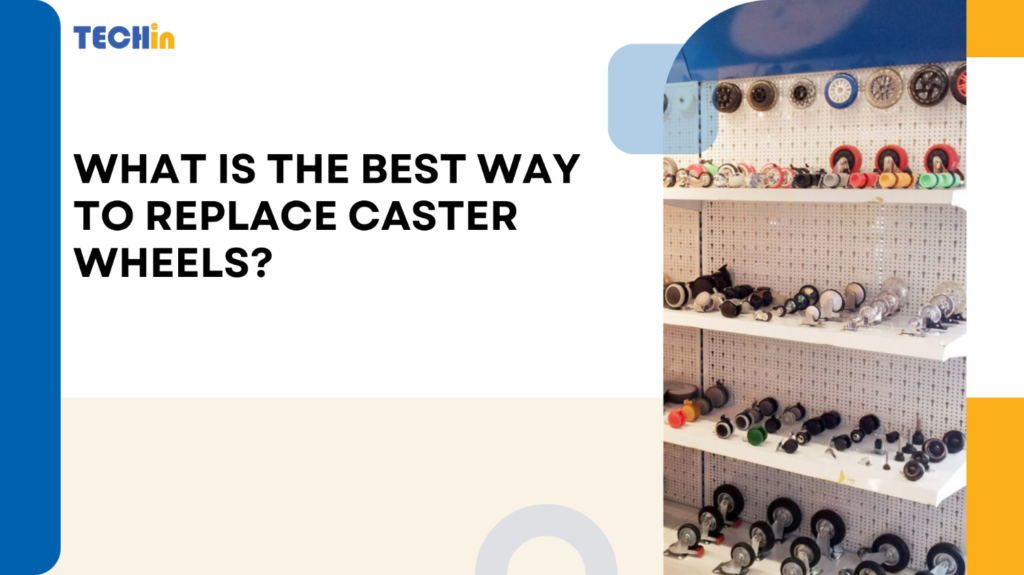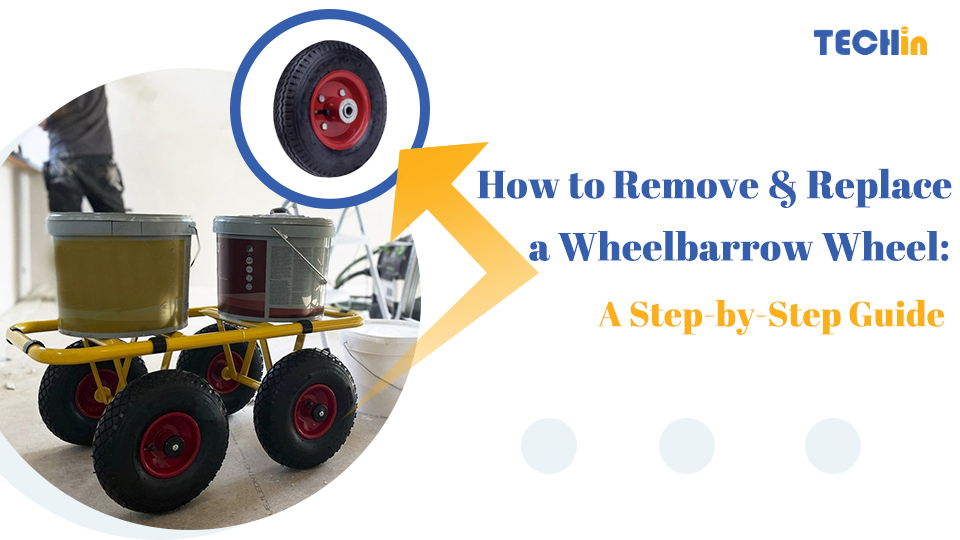Replacing caster wheels can make a huge difference in the usability and lifespan of your furniture or equipment. Over time, caster wheels can wear out, stop working properly, or even damage your floors. Whether you’re dealing with an office chair, a mobile cart, or heavy furniture, following a step-by-step process for replacing caster wheels will help you do it safely and efficiently.
The Best Way to Replace Caster Wheels
The best way to replace caster wheels is to first prepare your furniture by stabilizing it upside down, then carefully remove the old casters using appropriate tools. After selecting compatible replacement wheels based on size, material, and load capacity, securely install the new casters and test them to ensure smooth operation.
Replacing caster wheels doesn’t have to be hard. Here’s a step-by-step guide to make it as easy as possible.
Step 1: Prepare Your Furniture for Caster Replacement
Begin by selecting a workspace that is spacious and well-lit. Clear the area around the furniture or equipment to avoid any obstacles. Lay a blanket, towel, or cardboard on the floor to protect the surface and the furniture itself. Carefully turn the furniture upside down or on its side, ensuring it is stable and won’t move during the replacement process. This step is crucial as it provides full access to the caster wheels and prevents accidental damage or injury.
Tools Needed: Blanket/towel, protective gloves (if needed).
Step 2: Safely Remove the Old Caster Wheels
To remove the old caster wheels, first, determine the type of attachment mechanism (e.g., friction ring stem, threaded stem). For friction ring stems, grip the wheel firmly and pull it straight out from the socket. If it’s stuck, you can use a flathead screwdriver to gently pry the wheel loose, being careful not to damage the furniture’s socket. For threaded stems, use a wrench or pliers to unscrew the caster by turning it counterclockwise. Applying a bit of lubricant can help ease the removal process if the casters are particularly tight.
Tools Needed: Flathead screwdriver, wrench or pliers, lubricant (optional).
Step 3: Choose the Right Replacement Caster Wheels
Choosing the right replacement caster wheels is critical to ensuring the longevity and functionality of your furniture. Measure the diameter of the stem and the wheel, and note the type of stem (e.g., grip ring, threaded). Consider the material of the wheel—hard wheels work best on carpets, while soft wheels are preferable for hard floors to avoid scratches. Also, check the load capacity of the new casters to ensure they can support the weight of the furniture and any items placed on it.
Tips: Bring an old caster to the store or use online specifications to match the new caster perfectly. Consider specialty casters if you have specific needs, such as locking mechanisms or high weight capacity.
Step 4: Install the New Caster Wheels
To install the new caster wheels, align the stem of the caster with the socket in the furniture base. For friction ring stems, push the caster into the socket until you hear a click, indicating it’s securely in place. For threaded stems, align the caster stem with the socket and turn it clockwise until it is tightly screwed in. Ensure the caster is securely attached and spins freely. Repeat the process for all caster wheels, checking that each one is properly installed and aligned.
Tips: If the new caster does not fit easily, do not force it. Double-check the measurements or consider using an adapter if necessary.
Step 5: Test and Adjust Your New Caster Wheels
After all the new casters have been installed, carefully turn the furniture upright. Gently push the furniture across the floor to test the wheels. Ensure that all casters roll smoothly and that the furniture moves easily without wobbling or resistance. If any caster feels loose, repeat the installation step to ensure it is securely attached. Also, check that the wheels do not scratch or mark the floor surface, particularly if you are using hard casters on delicate flooring.
Tips: If you encounter resistance, check that no debris is caught in the wheel and that the caster is not misaligned. If the furniture feels unstable, consider adjusting the caster heights or using casters with locking mechanisms.
People Also Ask
1. What Tools Do I Need to Replace Caster Wheels?
When replacing caster wheels, having the right tools on hand will make the process smoother and more efficient. The essential tools you’ll need include:
- Flathead Screwdriver: Useful for prying out friction ring stem casters.
- Wrench or Pliers: Necessary for unscrewing threaded stem casters.
- Lubricant: Optional, but helpful for loosening tight or stubborn casters.
- Protective Gloves: To protect your hands while working with tools and furniture.
- Measuring Tape or Calipers: For accurately measuring the size of the caster stem and wheel.
Having these tools readily available will ensure you can handle any challenges that arise during the replacement process.
2. What Are the Most Common Mistakes When Replacing Caster Wheels?
Even though replacing caster wheels is a straightforward task, there are a few common mistakes that people often make:
- Incorrect Measurements: Failing to accurately measure the stem diameter and wheel size can lead to purchasing the wrong caster, which won’t fit or function properly.
- Using Incompatible Materials: Installing hard wheels on a hard floor can cause damage or excessive noise, while soft wheels on carpet may not roll smoothly.
- Forcing the Caster: Trying to force a caster into place can damage the furniture socket or the caster itself. Always ensure proper alignment and use the right technique.
- Neglecting Load Capacity: Ignoring the weight capacity of the casters can lead to premature wear or even breakage, especially with heavier furniture.
Avoiding these mistakes will help you achieve a successful and durable caster wheel replacement.
3. How Can I Ensure the New Caster Wheel Is Compatible with My Furniture’s Surface?
To ensure that your new caster wheels are compatible with your furniture’s surface, consider the following factors:
- Flooring Type: For hardwood, tile, or laminate floors, choose soft rubber or polyurethane wheels to prevent scratching. For carpeted surfaces, harder plastic or metal wheels are generally more effective.
- Load Distribution: Heavier furniture requires casters with higher load capacities to prevent floor damage and ensure smooth rolling.
- Wheel Size: Larger wheels tend to roll more easily on uneven surfaces or thick carpet, while smaller wheels are better for flat, smooth surfaces.
- Test Before Use: After installing the new casters, test the furniture on your floor surface. If the wheels don’t roll smoothly or cause damage, consider using a different type of caster or adding floor protection pads.
By taking these considerations into account, you’ll ensure that your new casters not only fit your furniture but also perform well on your specific floor type.
Summary
By following these steps and avoiding common mistakes, you can confidently replace the caster wheels on your furniture, ensuring smooth and reliable movement. Taking the time to properly prepare, remove, select, install, and test your new casters will result in a job well done and extend the life and functionality of your furniture.








